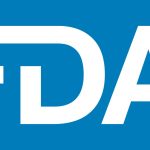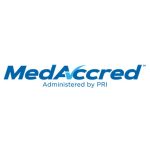Early in my company’s short history, I almost made a big mistake by passing on getting UL Certification. My team, however, made a compelling case to move forward with what ended up being a core driver of our success to date in attracting new customers and partners. When your business is in its infancy, everything is a learning experience — even those close calls. Getting UL Certified was one of the smartest decisions we could have made for our business, for our customers, and for the medical device industry. Now let’s talk about why I hesitated and some key learnings for companies in the same position.
Certifications Are Achievable for Small Companies
There’s a common misconception that certifications are only for big companies. Having worked for several companies in safety-critical sectors, I am aware of the value of certifications. I just wasn’t sure it was the right time for us to pursue UL certification. Our team was laser-focused on innovation and time to market. Why slow down with a process that is known for being costly, long, and time-consuming at a minimum? I also questioned whether our customers really cared about UL certifications or if it was more of an industry checkbox.
What ultimately changed my mind? Dogfooding. Yes, you heard that right. We’re big believers in the value of dogfooding — using our own products internally. Our dogfooding efforts focus on replicating our customers’ regulatory environments to better understand their challenges while improving our offerings in the process.
There are multiple benefits of using your own products in-house. It improves product quality, testing, and frequency of new releases. Not only can companies better empathize with its customers and tailor new features to their needs, but they can also deliver a better-quality product. Using your own products daily makes it much easier to proactively identify and mitigate bugs. We’ve found that we can also deliver new innovations faster because we don’t need to wait for feedback from our customers since we’re already experiencing the same challenges ourselves.
Our VP of Regulatory Strategy, Paul Jones, who contributed to the development of IEC 62304, viewed getting certified as just an extension of the dogfooding principle. As Paul told me, we needed to “walk the walk.” It’s easy to make the claim that your product can minimize the time spent on compliance documentation, but it’s difficult to prove. As a consumer example, think about companies that advertise their products as “organic.” While any manufacturer can say a product is “organic,” to get certified to sell under the “organic label” in a supermarket you need an independent verification of that claim.
Think of certifications as “best practice manuals” for your business. You review the guidelines, implement them, and then hire a third-party company to certify you. Essentially the standards are a common set of rules, and the independent standards body verifies that you are implementing these rules the way they are written — all very similar to what the FDA is looking for from medical device manufacturers in their submissions. They want all industry stakeholders — from regulators to customers to partners to patients — to use the same language. These common expectations make it easier to proactively troubleshoot and identify next steps in the event of any device performance issues to prevent patient harm.
Standards Build Trust
Standards not only build trust with prospective customers but also enhance product development through a heightened focus on both risk management and enhanced documentation. In medical device development, integrating design controls with risk management is essential. Best practices dictate a good flow between design controls and risk management. Toward this objective, we recognized we needed to refine our testing process to assess the impact of each anomaly on critical features, updating design outputs, verifications, and validations accordingly.
Keep in mind, certification doesn’t end when you get the logo. It’s an ongoing commitment to annual audits to maintain compliance with evolving standards. As a former inspector, Paul strongly believes the best way to survive an FDA inspection is always to be prepared for it. Preparing for certification audits helps us identify features for our customers that not only aid in audit preparation but also in proactively resolving issues.
Ultimately our certification journey drove innovation and inserted even more rigor into our product development process. Obtaining UL certifications is well worth the investment. It not only aligns your company and practices with industry best practices but also generates insights to improve products for the end user.







